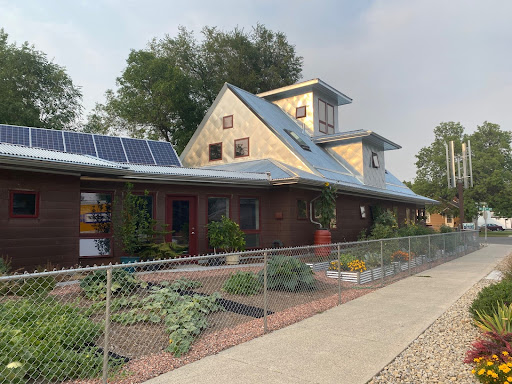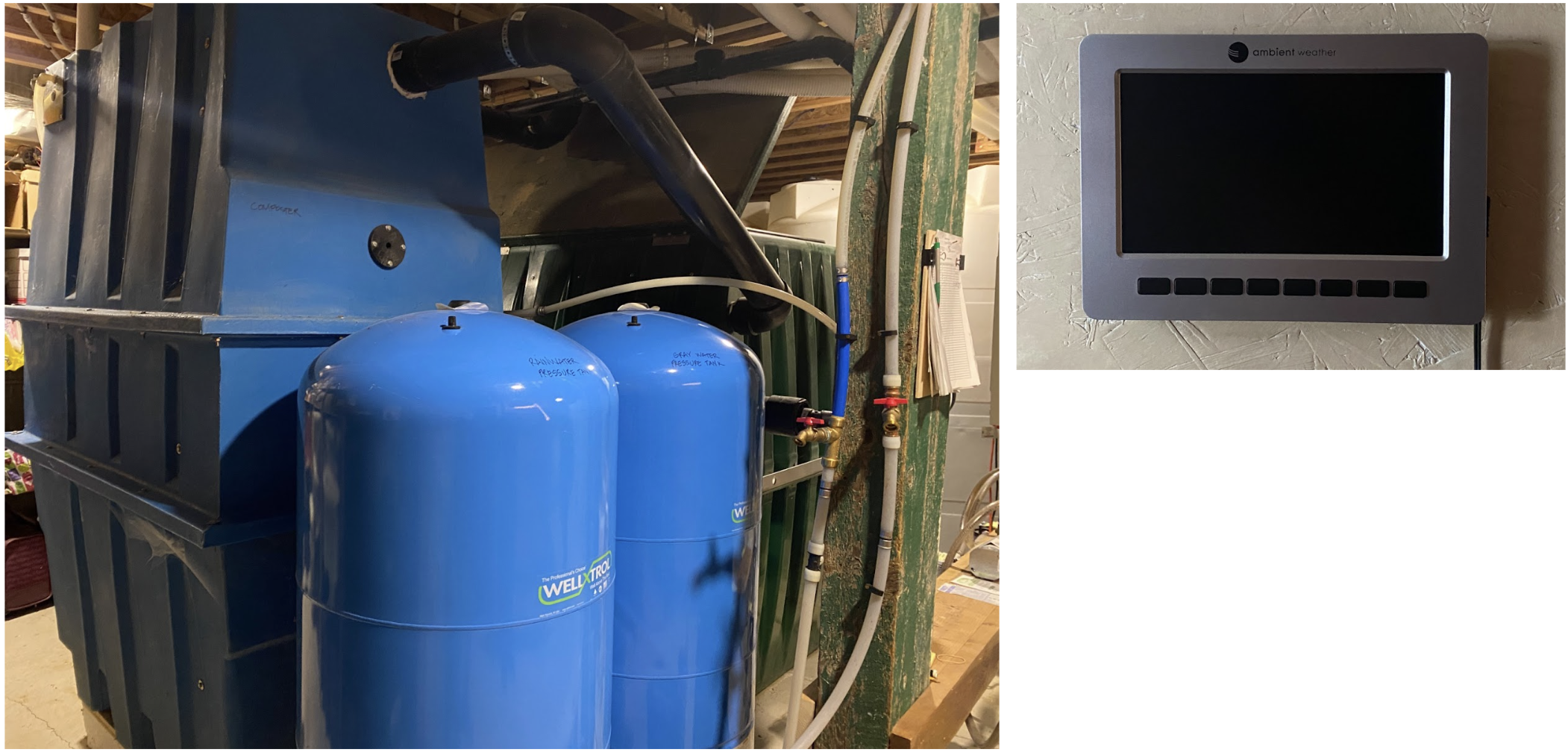Technofixes and Place: Environmental Building in Montana
Technofixes and Place: Environmental Building in MontanaAnnika Hirmke (University of Colorado, Boulder)
06/24/2024 | Projects
The urgency of climate change has been taken on by many architects and designers as “the fundamental design problem” (Barber 2019, 77). Such framings elicit utopic and abstract visions of environmentally sustainable and responsive dwellings that are often entangled with what Donna Haraway refers to as “a comic faith in technofixes” (2016, 3) and Gökçe Günel describes as “technical adjustments” that pose as climate solutions yet limit broader possibilities of questioning how we live (2019, 10). For this project I (a white immigrant/settler on this land) spoke with architects (primarily white settlers) in Montana who are in some way oriented towards sustainability but also aim to take a more holistic look at culture, environment, and history. While relying on abstract techno-visions that often serve capitalist logics of efficiency, their approach also includes deep concern for grounding their practice in place, though they struggle to grapple with the ongoing settler colonial attitudes so present in Montana. I therefore interrogate if and how these architects move beyond abstract design visions and techno-fixes by focusing on strategies beyond material considerations. I argue that while these architects are often dedicated to accounting for the history and culture of place, their practice does not adequately confront the systemic issues of extractive capitalism and settler colonialism that made Montana the place that it is.

Figure 1: The Living Building. A fully off-grid, high-efficiency building set in one of the most urban areas in Montana. [Image credit: Author]
Cybertecture and the Living Building
The Living Building, a long-awaited vision by one architect, is a completely off-grid building that relies upon tracking monitors to understand whether the inhabitants have enough water and energy. Such tools are reminiscent of “cybertecture” models that aim to redesign the way people live and develop through “techno-aesthetic ensembles.” Ideally, of course, the building never runs out of water or energy and the insulation provides sufficient comfort. In that case the displays are used to track how well the building works: To learn how much water is collected during the dry summers of Montana and to optimize resource collection in this and future buildings. Such displays also act as signs for inhabitants to make changes such as opening the windows or adding solar heaters to the building system. Inhabitants are thereby trained to become a part of the efficiency optimization of the building. These sensors can also act as mediating tools that contribute to further objectification and abstraction of the environment in service of an optimization and efficiency through the smartification of our built environment (Anusas and Ingold 2013; Halpern and Mitchell 2023). Yet, these tracking monitors were not only used to abstract and separate the indoor space from outside climate and land.

Figure 2: Composting and water recycling system (left side) and the performance monitor that tracks weather, energy intake, water intake, and indoor and outdoor temperatures (right side).
While architecture in a Western capitalist context has striven for stable and “ideal” conditions in building interiors (Barber 2019; Murphy 2006), some of the Montana architects disrupt this progression by calling for more connection between inhabitants, structure, and environment. One architect emphasized how static temperatures through heating and air-conditioning are not only more energy consumptive but also damaging to human health. While protection from extreme temperature fluctuations is needed, especially in the cold winters of Montana, they believed that a little more indoor temperature variation would do good for the planet and for the humans. The architects thereby hope to change the way we live towards more environmental balance and connection. Yet, as design professionals, their practice does not address larger political systems that keep Indigenous people dispossessed and disconnected from their lands and rural, poor settlers unable to afford such ideals. Such design principles also exhibit a tension between encouraging inhabitants to participate in the natural changes of the environment and simultaneously controlling, or mediating, that participation. The latter perpetuates cybernetic technological “mystico-utopian overtones” (Busbea 2020, 207) by emphasizing progressive optimization precisely because they continue to emphasize particular designs as a techno-fix to climate catastrophe.
Such efficiency and accounting strategies of architectural design were also part of the Western energetic invention and used for “a civilizing mission that aimed at improving wasteful peoples and lands” (Daggett 2019, 81). One Crow architect shared how architecture was used across the world quite physically as a colonial tool that worked to put people into little square boxes and rid them of their culture and relationship to the land. His practice is therefore focused on connecting cultural and sustainability principles by incorporating tribal knowledge into design. Sustainable building alone, however, does not break from such colonial separations and capitalist calculations of efficiency and profit, and, in fact, works to perpetuate much of the same. While white settler architects I spoke with certainly do more than use sustainability as a green-washed slogan that maintains economic gain as a central objective (Gunder and Hillier 2009), their practice is still tied to a sociotechnical imaginary that focuses on design as a solution and does not challenge unjust profit and property logics.
Beyond the Building
The design approaches described above fit well within the abstract techno-fixes critiqued by many scholars. Some of the architects purport to take into account bigger contexts and systems In Montana, a state with twelve tribal reservations and a relatively poor and rural population more broadly, this would mean grappling with the settler colonial and capitalist systems threatening the livelihoods of both local Indigenous people and non-Indigenous settlers.
Set in one of the most urban areas of Montana, the Living Building hopes to challenge what a sustainable building in this context could look like. Montana, for many current and incoming settlers, continues to be imagined as a space of pure wilderness and vast empty lands. Often residents are attached to the idea of having their own piece of land, yet, in the words of one architect “there's just not enough planet for everybody to have their little 10-acre ranch.” Such imaginations also perpetuate frontier-like imaginings of the state as a relatively empty space to escape to while perpetuating the dispossession of those Indigenous to these lands (Brown 2013; Day 2015; Tate 2020). Cities are viewed by many Montanans as overwhelming and undesirable, so architects and planners hope to use buildings like this to show that an environmental “feeling” is possible even within the city. These projects are aimed to redirect the settler desire for empty space, towards an understanding that cities can also provide comfort. While such projects may provide an incentive to some, they continue to emphasize the building itself as a novel and utopic solution even though its cost is prohibitive for many. The architects themselves recognize that changing the way we build only goes so far if our attitudes do not change as well. Such projects are unlikely to shift frontier attitudes and wilderness imaginaries that keep settlers attached to private property and empty wilderness while Indigenous people continue to be removed from their lands. Capitalist logics and colonial attitudes are therefore sustained.
Several of these architects were also concerned with the accessibility of such architecture for ‘everyday Montanans’ (seeming to refer largely to rural, white settlers). Architects (especially ones focused on sustainability in some form) primarily serve high-income clients or communities who can afford to pay their fees and the extra costs that come with alternative building materials and technologies. Many of them feel frustrated with their limited reach and powerlessness over larger systemic issues of climate change, and several use advocacy in political and educational contexts. Advocacy is used to shift community attitudes and push for local policy changes towards environmental building becoming more affordable, accessible, and commonplace. All of the architects also pushed for some form of collaboration, primarily focused on involving the community that is being designed for in the design process, to ground abstract design principles into what people actually need and how they will use it. While educational efforts can veer into training ‘everyday Montanans’ to view technical tools as solutions to bigger social problems, the policy focus and collaborative approach starts to highlight transformations of community, practice, and politics that go beyond technology.
Conclusion
Most of these architects’ practice remains focused on technological tools and design principles as solutions to our climate crisis, yet fail to challenge the larger political systems that led us to this crisis. At the same time, simple critiques of abstract techno-visions overlook the complexities of how technological tools are used in local practices and the at times subtle ways they perpetuate capitalist and colonial systems even when signaling a more holistic approach. While a certain environmental participation and connection appears throughout these approaches, architecture as a field is tied to capitalist systems and easily falls back into material or technological optimization as a primary solution. Architects are unable to withstand (and sometimes participate in) the entitlement to and romanticization of land that is so present in Montana. Advocacy and collaboration approaches start to challenge some of these political, economic, and technical systems, yet, such approaches are a supplement to the architects’ main practice. If a holistic approach to environmental architecture in Montana is meant to account for both the ecological and cultural context, it would hinge on centering local Indigenous people and voices, participating with our environment, and letting go of the Western emphasis on objectification and measurement strategies that flatten buildings, landscapes, and human and non-human beings to fit missions of capital accumulation and colonization (Cajete 2000; Daggett 2019).
Published: 06/24/2024
